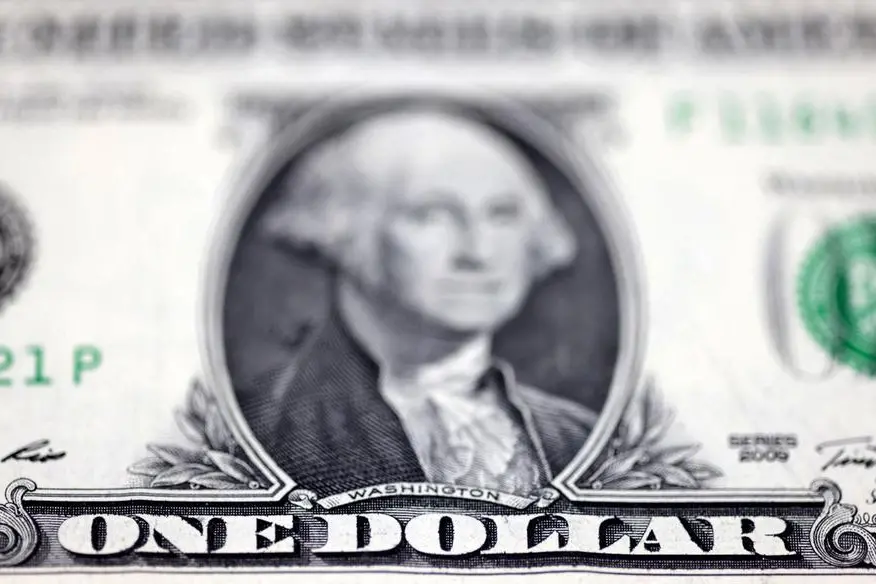PHOTO
(The opinions expressed here are those of the author, a columnist for Reuters.)
ORLANDO, Florida - The U.S. consumer's resilience to prolonged elevated borrowing costs has shown signs of wilting recently, but barring a deep downturn in the labor market, soaring household wealth should ensure it doesn't crack.
Federal Reserve figures show that U.S. households' net worth leaped by $5 trillion in the first quarter to a record $161 trillion, mostly on the back of rising equity prices, while household debt as a share of GDP fell to its lowest in 23 years.
While 'higher for longer' credit card and mortgage rates are sapping consumers' strength to some degree, the S&P 500 and Nasdaq are up 5% and 9%, respectively, so far in the second quarter.
This suggests wealth effects remain positive, and the economy will continue to enjoy and be driven by consumption-fueled growth. If a soft landing is to be achieved, it will be in no small part thanks to the indefatigable consumer.
In a deep-dive analysis last month of U.S. consumer wealth, BNP Paribas economists predicted that higher stock and house prices will lift consumer spending by $246 billion this year, providing a "sizable boost" to the economy.
That would be the third-largest boost to U.S. consumer demand in 25 years, they reckon, and add roughly 1 percentage point to GDP growth for the year.
"Consumer balance sheets are very healthy. Americans have significantly reduced debt burdens since the 2008–09 recession. Household net worth remains elevated relative to liabilities, – a favorable financial backdrop," they wrote.
RECORD EQUITIES, RECORD EXPOSURE
The Federal Reserve's quarterly update of its 'Financial Accounts of the United States' database earlier this month confirmed the increasing strength of U.S. household finances. Granted, they are broad numbers and fail to capture any distribution breakdown, but they are nevertheless instructive.
Of the $5.12 trillion increase in total net worth in the first quarter, corporate equity accounted for $3.83 trillion and real estate $907 billion.
Real estate might be a little surprising, given that median house prices fell 0.6% in the period, but the equity-driven component is not - at the aggregate level, a rising Wall Street tide lifts all household boats.
Analysis from Ned Davis Research shows that households' exposure to stocks has never been higher - stock holdings as a share of financial assets reached an all-time high of 34.5% in the first quarter.
The distribution of that ownership is very uneven, with the richest 1% in the country owning 50% of equity wealth and the top 10% holding around 90%. But in aggregate, consumption still grows as the richest households account for the lion's share of retail sales in dollar terms.
This level of exposure to stocks raises legitimate concerns that households are fully invested at high valuations. The pain from a correction on Wall Street could be felt more widely than usual.
But it would need a pretty major pullback to wipe out the positive wealth effects of recent years. Last year alone, equity valuations added $7.39 trillion to total household net worth.
Zooming out further, household net wealth has risen by around $40 trillion since the pandemic, Fed data shows. Even adjusting for inflation, that is still up a staggering $19 trillion, analysts at Barclay estimate.
$500 BLN DIVIDEND
On the other side of the balance sheet, meanwhile, household debt as a share of GDP slipped to a 23-year low of 71.1% in the January-March period from 71.3% in the fourth quarter last year, the Fed's latest figures show.
Households' share of total U.S. debt in the first quarter stood at 27% - the last time it was lower than that was in 1956.
"With such a large tailwind behind them, it is hard for us to see consumers pull back sharply in the absence of a large exogenous shock," Barclays analysts Ajay Rajadhyaksha and Amrut Nashikkar wrote on Thursday.
While some analysts estimate that the pool of excess household savings built up after the pandemic has all but dried up, Rajadhyaksha and Nashikkar reckon it is still stands at a not-insignificant $850 billion.
On top of that, money market fund balances are back above $6 trillion, of which $2.45 trillion is from retail investors, according to the Investment Company Institute. That's a lot of cash earning around 5% or higher.
Apollo Global Management's chief economist Torsten Slok reckons the high interest rates money market funds are currently paying on deposits equate to around $500 billion in dividends for U.S. households.
That's around 2.5% of annual consumer spending.
"Put differently, Fed hikes are boosting consumer spending through higher money market fund dividends," Slok says.
In sum, consumers and Wall Street have so far withstood the Fed's most aggressive rate-raising campaign in 40 years that has ended up with the highest interest rates in years.
Looked at through the prism of household balance sheets and broader wealth effects, these foundations may be strengthening rather than weakening.
(The opinions expressed here are those of the author, a columnist for Reuters.)
(By Jamie McGeever Editing by)























